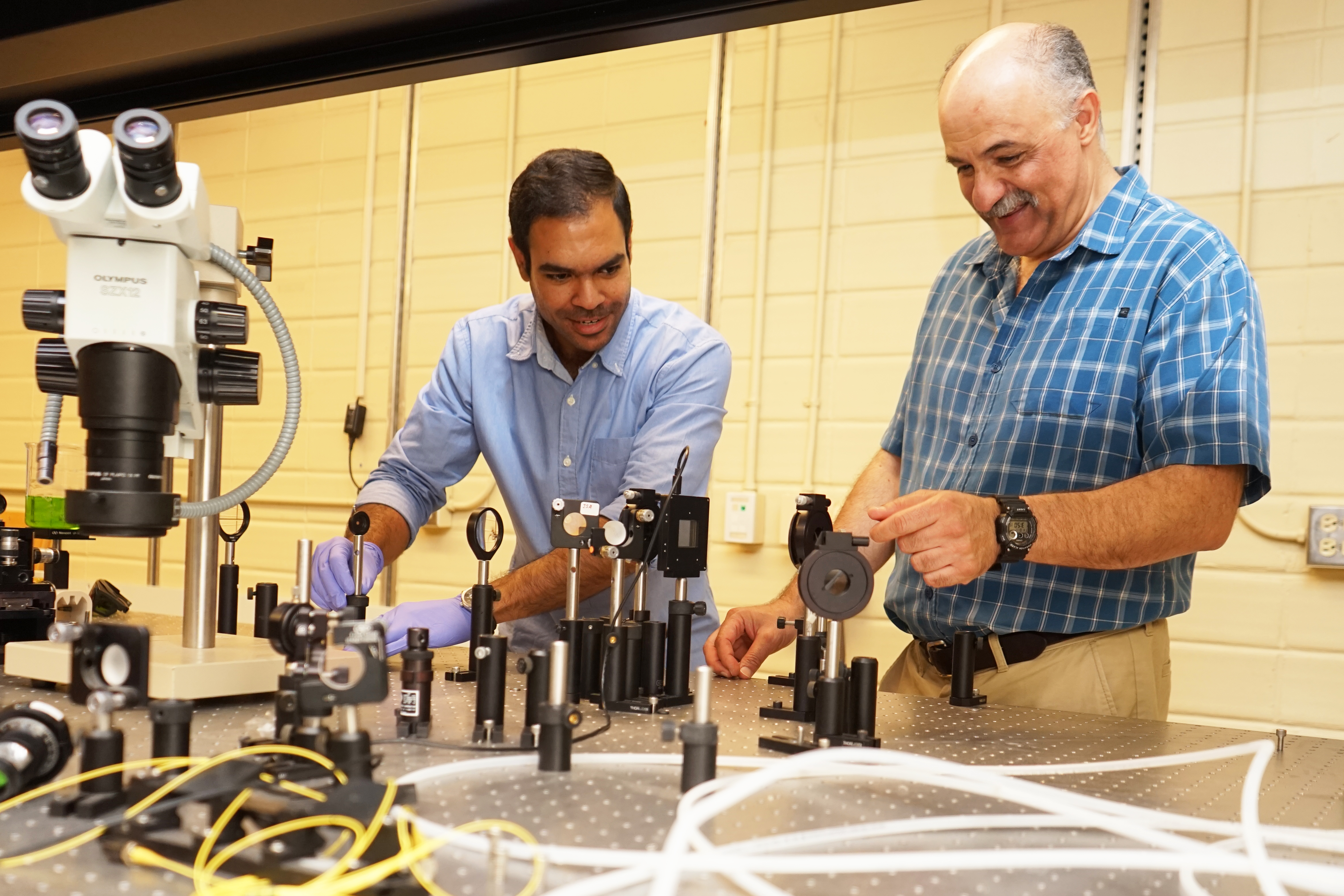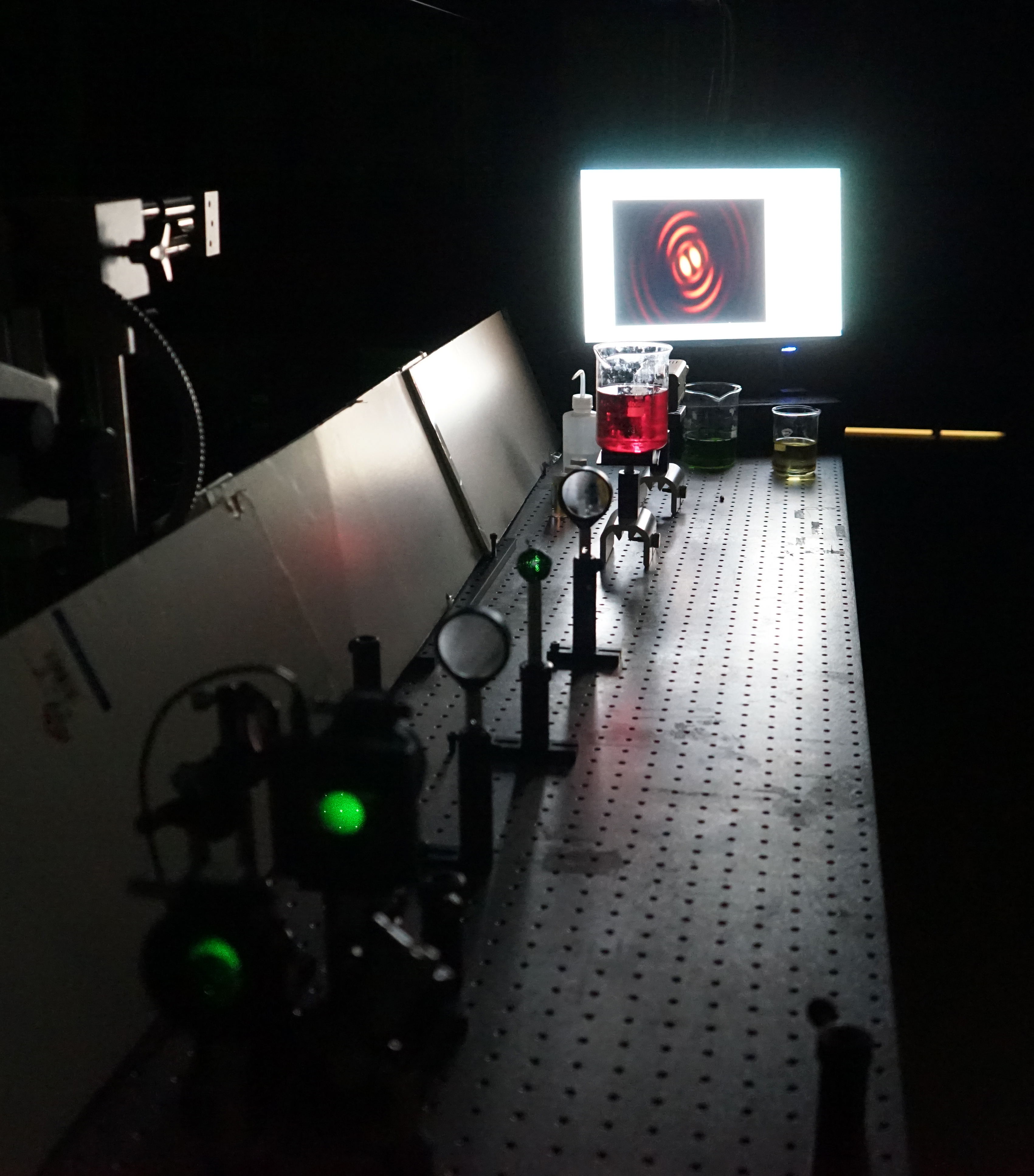
October 12, 2018
Put a straw in a glass of tap water and the straw will appear to bend where the air and water meet. But, put the same straw in a glass of salt water, and the bend angle of the straw is different than it appeared in the tap water — even though your eyes see no discernible difference between the liquid in the two glasses. This is due to a phenomenon called light refraction and researchers have been using refraction as a method to identify unknown fluids using what is called the index of refraction.
Researchers and industries use a variety of methods to measure the index of refraction of a fluid, including the use of a device called a refractometer. But these methods create two major concerns: resolution and dynamic range. Resolution tells the user how small a change in the index can be detected while dynamic range describes the range of materials and indices that can be detected.

Most refractometers rely on the refraction of a beam of light to determine the index of the fluid. But, Professor Mo Mojahedi and PhD candidate Ahmed Dorrah of The Edward S. Rogers Sr. Department of Electrical & Computer Engineering have devised a new method of measuring the refractive index. They use a property of light called orbital angular momentum to measure a fluid’s index of refraction with a high degree of resolution and extended dynamic range. In a paper recently published in Nature: Light Science and Applications, Mojahedi and Dorrah describe this novel approach.
“A beam of light can carry orbital angular momentum — think of this as the light’s ability to rotate objects — light can exert torque on particles,” says Professor Mojahedi. “We used this rotational aspect of light, for the first time, to measure various fluids’ optical properties.” To do this, Professor Mojahedi and Dorrah generated beams of light with intensity patterns that look like petals of a flower. These petals rotate depending on the refractive index of the medium in which the light is travelling in
“For the past couple of years, Ahmed and I have been working on engineering beams of light so that we can ‘program’ and vary their intensity pattern and value, their polarization, their orbital angular momentum, and their wavelength along the beam’s axis of propagation,” says Professor Mojahedi. “We call this Longitudinally Structured Light and this has been an exciting field of study: the recent paper shows one of many possible applications for such an engineered beam.”
Their approach is based on a fundamentally new idea: using light rotation instead of bending. “This method provides high resolution, covers a wide range of fluids and is done using a single device,” says Mojahedi. “It’s been really exciting to see that our work is being well received by so many researchers in the field.”
More information:
Jessica MacInnis
Senior Communications Officer
The Edward S. Rogers Sr. Department of Electrical & Computer Engineering
416-978-7997; jessica.macinnis@utoronto.ca